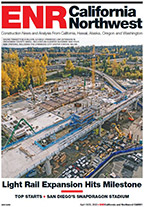
Lithuania, Latvia and Estonia are aiming to take their railway destinies more firmly in hand through Rail Baltica, a multinational effort to improve freight rail connectivity between Central and Northern Europe. Running from the port of Tallinn, Estonia, south through Latvia and Lithuania, the high-speed, standard-gauge line will connect with Warsaw, Poland, and ultimately, Berlin.
Construction of Baltica 1, the first 115-kilometer segment between the Polish-Lithuania border and a new intermodal terminal in Kaunas, Lithuania, is under way. Five Lithuanian contractor teams, chosen through a public bidding process conducted by Lithuanian Railways, started work between May and July 2013, with completion expected by late 2015.
Baltica 2, consisting of a new alignment between Kaunas and Tallinn, and costing an estimated $5.1 billion, has not launched yet. A joint venture representing the three Baltic states is in the process of formation, according to Domas Jurevicius, Rail Baltica project director at Lithuanian Railways.
A feasibility study for Baltica 2, prepared by AECOM in 2011, scoped out a 605-km route connecting Kaunas with Riga, Latvia, and running straight north to Tallinn. However, a possible alternative route that would run further east and connect with Vilnius, Lithuania, and Tartu, Estonia, is still being assessed, according to Jurevicius. A contract for the planning and environmental impact assessment of the Baltica 2 route will be tendered in the coming year.
Construction of Baltica 2 is expected to start in 2016. When completed, it will enable freight or passenger traffic at speeds up to 240 km per hour.
Rail Baltica will extend standard-gauge track through the Baltics for the first time. Because the Baltic states have historically had broad-gauge (1,520-mm) tracks, in concert with Russia and other former Soviet satellite nations, freight rail traffic has always faced the added burden and cost of shipping across the break-of-gauge between Poland's standard-gauge and the Baltic nations' broad-gauge lines.
The harmonization of gauges will eliminate the need for gauge-changing rolling stock, eliminating delays and lowering shipping costs.
Rail Baltica is a priority project of the European Union's Trans-European Transport Networks, and up to 85% of the bill may be covered by the E.U. through it's Connecting Europe Facility.




